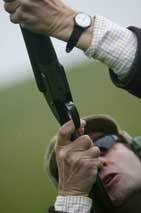Gameshooting: Much to gain from Campaign

The Game & Wildlife Conservation Trust’s (GWCT) current work on the value of predator control to ground-nesting birds demonstrates how important game management is to the wider conservation community. At a local level, some shoots have had much success in encouraging conservationists outside the gameshooting community to see the shooting world as a friend and ally in species recovery. We should, therefore, all be justly proud that for many years game management has delivered at least as much for conservation in this country as any other conservation organisation.
But are we now becoming complacent about the positive effects of game management on conservation? We were once ahead of the game, but is that still the case and should we be doing more?
Up until the early 1990s, before the development of our current agri-environment schemes, it was game management interests that provided cultivated habitats, supplementary feeding and freedom from predation for farmland birds. This was done almost in isolation and at no cost to the taxpayer.
Now, many of our government environmental stewardship options come directly from GWCT gamebird research — from wild bird seed and pollen and nectar mixes, to the provision of supplementary feeding for farmland birds — and they are an integral part of such schemes. The situation in our woodlands has been similar. In the 1980s, our woodland policies and grant programmes remained largely rooted in post-war policies of self-sufficiency in timber production. Traditional environmental management, the creation and management of rides, shrubby edges and open spaces, now considered essential for woodland biodiversity, had little importance in a plantation approach to woodland production. As today, these conservation measures were almost exclusively implemented by sporting interests.
So, in the face of all this, why is gameshooting, particularly the release of gamebirds, subject to growing criticism based on a range of alleged undesirable effects on wildlife and habitats? And why is pheasant releasing regarded as a potentially damaging activity by government conservation agencies?
Mostly the criticism seems based on the rise in popularity of gameshooting over the past 20 years and with it, the increase in the numbers of reared birds that are now being released in the UK. Despite the environmental benefits that can arise from their management, and without clear evidence, it is increasingly being suggested that current release levels are causing damage. The main way we can answer our detractors is to provide hard evidence at both a national and local scale.
New campaign
The Campaign for Game set up by the GWCT and to be launched at The CLA Game Fair is therefore a timely initiative. It is prompted by the urgent need to encourage shoots — no matter their size — to demonstrate maximum biodiversity gain from their game management activities.
To put the urgency of the situation into perspective, the RSPB recently produced Impacts of non-native gamebird release in the UK: a review, which highlighted a lack of knowledge on the large-scale impact of releasing gamebirds in the UK. While the report acknowledged that the management of land and wildlife for pheasant and partridge shooting delivers benefits to certain habitats and species, it also suggested a significant and growing body of vidence indicating the damaging effects of non-native gamebird release and related activities.
As a community, we need to identify what the challenges might be and where they may exist, and how we can address the impacts of releasing gamebirds to maximise the biodiversity benefits. We also need to investigate how a sustainable case can be clearly demonstrated for organised released gameshooting compared with other forms of land use.
To help answer these questions, the GWCT’s Campaign for Game is encouraging individual shoots to maximise the biodiversity benefits that their game management delivers. Guidance can be selected from a list of key management options capable of providing biodiversity benefits on a shoot by shoot basis, and the GWCT’s advisory service can provide a bespoke biodiversity
assessment to put your shoot at the forefront of wildlife management.
Rise to the challenge
The recent State of Nature report by a coalition of conservation organisations suggested nature conservation in this country has stalled. However, game managers with their land management knowledge and experience of managing wildlife on a day-to-day basis, are one of the best-placed groups to reverse this trend and secure the recovery of our most cherished flora and fauna. At the Game Fair, the GWCT will be asking whether you will rise to the challenge of improving the “state of nature” on your shoot through good game management and through more research. Our aim is to demonstrate unequivocally the net conservation gains provided by the game management community.
If you love your sport, this is an opportunity not to miss. If you are attending The CLA Game Fair, visit the GWCT’s stand, take part in our debate in the Game Fair Theatre on Friday afternoon and join the campaign.








